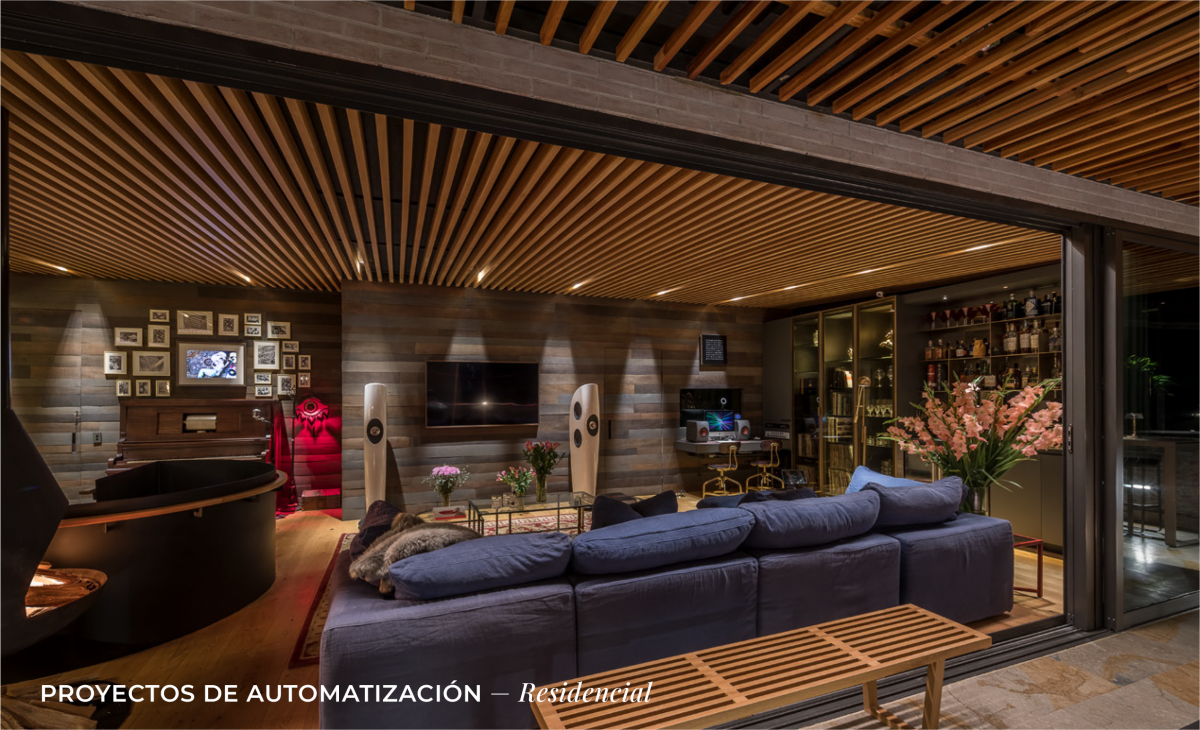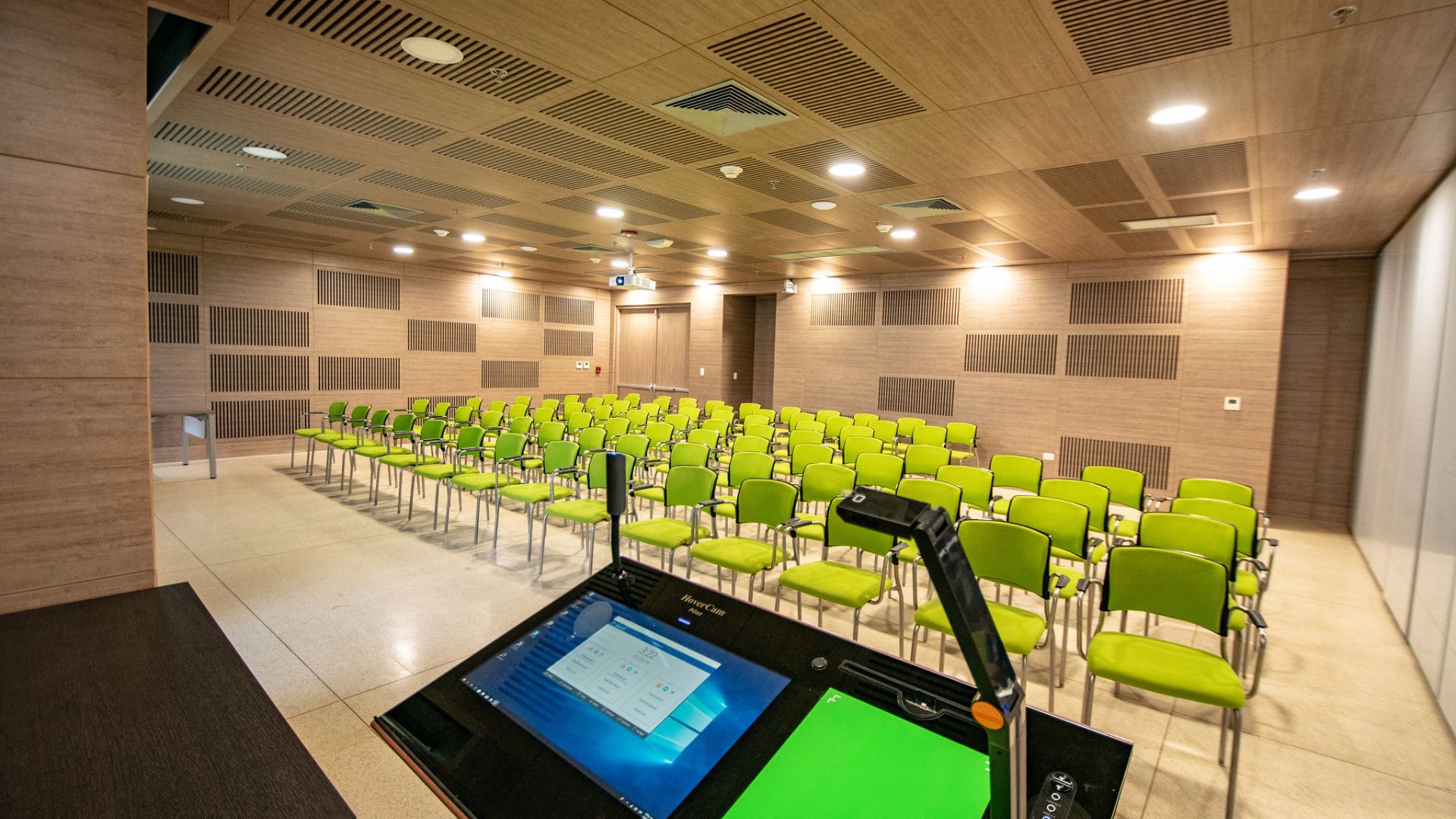Table of contents

A smart home touchscreen control panel for modern living room, displaying various icons for home
Key Takeaways
- Communication protocols and standards are crucial for seamless interconnectivity and interoperability among home automation devices, enabling a cohesive and smart living environment.
- Popular communication protocols like Wi-Fi, Zigbee, and Z-Wave each have their unique strengths, catering to different home automation needs in terms of range, power consumption, and bandwidth.
- Interoperability and future-proofing are significant advantages of adopting standardized communication protocols, allowing for diverse devices from various manufacturers to work together efficiently and adapt to future technological advancements.
- Security and reliability are emphasized in these communication standards, with protocols like Z-Wave and Zigbee using AES encryption to secure device communications and ensure user privacy.
- The Matter Standard, led by the Connectivity Standards Alliance, promises significant advancements in home automation by ensuring end-to-end encrypted communication and seamless interoperability across different ecosystems, supported by industry giants.
- In conclusion, choosing the right communication protocol and adhering to established standards are foundational steps in creating an efficient, secure, and scalable smart home ecosystem.
What are Communication Protocols and Standards?
Definition of Communication Protocols and Standards
In the area of home automation, communication protocols and standards are the backbone that ensures devices can talk to each other seamlessly. Simply put, a communication protocol is a set of rules that dictate how devices communicate. Imagine it as the common language that all your smart devices use to understand one another. Whether it’s turning on the lights or adjusting the thermostat, these protocols make sure the command is delivered and executed correctly.
Standards, on the other hand, serve as an agreed-upon framework that manufacturers follow to make their devices compatible with others. This is crucial because it means no matter the brand, if the devices share the same standards, they’ll work together efficiently. Think of it as the etiquette guide for device interaction, ensuring everyone plays by the same rules for a harmonious smart home environment.
Importance of Communication Protocols and Standards in Home Automation
Understanding the importance of these protocols and standards in home automation can’t be overstated. They’re what make it possible for a diverse range of devices to become part of a cohesive system. Here’s why they’re so crucial:
- Interoperability: With a common set of protocols, devices from different manufacturers can communicate and work together, expanding the possibilities of home automation systems.
- Flexibility and Scalability: As your needs change or technology advances, being able to add or upgrade devices without worrying about compatibility issues is essential. Protocols and standards make this possible.
- Reliability and Efficiency: Through standardized communication protocols, smart home devices can respond quickly and operate more reliably. This not only improves the user experience but can also contribute to energy savings by ensuring devices operate optimally.
In essence, without these protocols and standards, the concept of a smart, interconnected home would be more of a headache than a convenience. They are the invisible threads that connect our devices, allowing us to control our homes with a tap or a voice command. By fostering an ecosystem where devices understand each other, we’re able to unlock the full potential of home automation, bringing us closer to the futuristic homes we’ve always imagined.
Popular Communication Protocols in Home Automation

In the area of home automation, selecting the right communication protocol is key to a seamless smart home experience. These protocols serve as the language through which our devices communicate. Let’s jump into the most popular ones: Wi-Fi, Zigbee, and Z-Wave.
Wi-Fi
When we think of connecting devices in our home, Wi-Fi is often the first thing that comes to mind. It’s the backbone of internet connectivity in most homes and has extended its reach into home automation. Wi-Fi’s main strength lies in its high data transfer speeds and broad coverage area, making it ideal for devices that require substantial bandwidth, such as smart cameras and streaming devices.
But, it’s not without its drawbacks. Wi-Fi networks can become congested with too many devices, leading to potential connectivity issues. Also, they tend to consume more power, which can be a concern for battery-operated devices.
Zigbee
Zigbee stands out for its ability to create large mesh networks, where each device can communicate with others and extend the network’s reach. This protocol excels in scenarios requiring low-power, low-data-rate communications over short distances. It’s perfect for sensors, smart lights, and other devices that don’t need a lot of bandwidth but benefit from being networked together to increase a home’s IQ.
One of Zigbee’s strengths is its scalability and flexibility, allowing for over 65,000 devices on a single network. Its low power consumption means batteries in Zigbee devices can last for years, eliminating frequent battery replacements.
Z-Wave
Z-Wave, like Zigbee, uses a mesh network to connect devices, but it operates on a different frequency, reducing interference from Wi-Fi and other common wireless technologies. This makes Z-Wave a reliable choice for home automation, with a focus on compatibility and interoperability among different manufacturers’ devices.
A notable advantage of Z-Wave is its emphasis on security. Z-Wave networks use AES encryption, the same encryption standard used by governments and financial institutions, ensuring that communications between devices are secure. With over 2,600 certified products on the market, Z-Wave provides a broad ecosystem of devices that can work seamlessly together.
By understanding the strengths and limitations of these protocols, we can make informed decisions on which ones best suit our home automation needs.
Comparison of Communication Protocols
In the area of home automation, understanding the nuances of communication protocols is key to creating a seamless, efficient, and secure smart home environment. Let’s jump into how these protocols compare in terms of range, power consumption, interoperability, and security.
Range
When it comes to range, Z-Wave takes the lead. With the capability to cover distances up to 100 meters in open air, it’s perfect for larger homes. Zigbee follows closely, boasting a range of approximately 10 to 20 meters indoors. It shines in its ability to extend its reach through mesh networking, where devices can pass signals between each other. On the flip side, Wi-Fi, while widely used, typically offers a shorter range than Z-Wave and depends heavily on router capabilities and environmental factors.
Power Consumption
In the sphere of smart homes, where many devices are battery-operated, power consumption becomes a critical factor. Zigbee and Z-Wave outperform in this arena due to their low-power requirements. Zigbee devices can often run for years on a single battery, making them incredibly efficient. Wi-Fi, conversely, is known for its higher power consumption, which can be a drawback for devices that need to operate continuously without frequent battery changes.
Interoperability
Interoperability refers to the ability of various devices and systems to work together seamlessly. Z-Wave prides itself on high levels of interoperability, with a rigorous certification process ensuring that all Z-Wave devices can communicate with each other even though brand differences. Zigbee also supports a wide range of devices, but its open-source nature can sometimes lead to compatibility issues. Wi-Fi enjoys universal adoption, which naturally promotes interoperability; but, it lacks a unified standard specifically for home automation, which can occasionally pose challenges.
Security
Security is paramount in home automation to protect against unauthorized access and ensure user privacy. Z-Wave and Zigbee both offer strong security features, including AES encryption, which is a standard for secure communication. Wi-Fi also supports robust encryption through WPA3, making it secure for home automation purposes. But, its widespread use makes Wi-Fi networks more frequent targets for attacks, underscoring the importance of regular security updates.
In our exploration of communication protocols, it’s clear that each has its strengths and unique benefits. While Z-Wave boasts impressive range and universal interoperability, Zigbee excels in power efficiency and mesh networking capabilities. Wi-Fi, with its high data transfer speeds and broad coverage, remains indispensable for bandwidth-intensive applications even though its power and security challenges.
Importance of Standards in Home Automation
When diving into the world of smart homes, understanding the playing field is crucial. We’re talking about the standards that sit at the very core of home automation. These aren’t just rules but the backbone that facilitates seamless interaction between devices.
Role of Standards in Ensuring Compatibility
First off, let’s tackle the crucial role of standards in ensuring compatibility. It’s no secret that the home automation market is flooded with devices from various manufacturers. Each boasts its unique features and capabilities. But, without a set standard, the likelihood of these devices communicating effectively is slim. Standards act as a common language, allowing devices to understand each other. Zigbee and Z-Wave, for example, are standardized protocols that ensure devices from different manufacturers can work together in harmony. This interoperability is not just convenient but essential for creating a truly smart, cohesive home environment.
Benefits of Using Standards in Home Automation
Let’s look at the benefits of using standards in home automation. The advantages are countless, but we’ll highlight a few key points:
- Interoperability: As mentioned, standards allow devices from different manufacturers to communicate, making it easier to build and expand your smart home system.
- Future-proofing: A home equipped with standardized technology is more adaptable to future innovations. You won’t have to overhaul your entire setup just to incorporate the latest gadgets.
- Reliability: Standards ensure that devices meet a minimum performance threshold, reducing the likelihood of malfunctions and ensuring a dependable smart home experience.
- Security: With standardized protocols, comes a commitment to security. Protocols like Zigbee and Z-Wave include strong encryption methods to protect your home from unauthorized access.
By embracing standards, we’re not just investing in devices; we’re investing in an ecosystem that promises compatibility, reliability, and security. As the smart home market evolves, these standards will play a pivotal role in shaping the future of home automation, ensuring that our living spaces become more intelligent and intuitive.
Current Standardization Efforts in Home Automation

As the home automation industry continues to evolve, several key players have emerged, focusing on developing and promoting standardized communication protocols. These standards are essential for ensuring that smart home devices from different manufacturers can work together seamlessly, a challenge the Rekall Tech IT Solutions team often tackles when designing integrated home automation systems for clients. Let’s jump into some of the leading standardization efforts in the world of home automation.
Matter Standard
One of the most significant efforts in home automation standardization is the Matter Standard. Spearheaded by the Connectivity Standards Alliance (CSA), formerly known as Zigbee Alliance, Matter aims to be the universal language for smart home devices. It’s designed to ensure that various products, from door locks to thermostats, can communicate with each other regardless of the manufacturer. The key benefits of the Matter Standard include:
- Interoperability: With Matter, devices across different ecosystems can work together, breaking down the barriers previously posed by proprietary protocols.
- Security: Matter prioritizes security, ensuring that all communications are encrypted end-to-end, protecting users’ privacy and data.
- Simplicity: The standard is designed to simplify the setup process, making it easier for consumers to add new devices to their smart home networks.
The Matter Standard is on track to become a game-changer in the home automation sector, with broad support from industry giants like Apple, Google, and Amazon.
The Zigbee Alliance
The Zigbee Alliance has been at the forefront of wireless communication standards for home automation. Known for its low-power, mesh networking technology, Zigbee provides the backbone for many smart home devices such as lights, switches, and sensors. The key characteristics of Zigbee include:
- Reliability: Zigbee’s mesh networking capabilities ensure that messages can hop between devices, enhancing signal reliability throughout the home.
- Energy efficiency: Designed for devices that require low power consumption, Zigbee is ideal for battery-operated sensors and controls.
- Compatibility: Zigbee devices can interoperate with a wide range of products, making it a versatile choice for consumers.
Under the new CSA umbrella, Zigbee continues to play a crucial role in advancing interoperable standards for the smart home industry.
The Z-Wave Alliance
The Z-Wave Alliance champions another leading wireless communication protocol, Z-Wave, which focuses on small to medium-sized networks like those found in residential settings. The advantages of Z-Wave include:
- Operational efficiency: Z-Wave operates on a different frequency than Wi-Fi and Bluetooth, minimizing interference and ensuring smooth communication between devices.
- Scalability: Z-Wave’s mesh network can support up to 232 devices, offering flexibility for expanding smart home setups.
- Market reach: With over 3,300 certified products on the market, Z-Wave boasts one of the most extensive ecosystems of compatible smart home devices.
By promoting standardization and interoperability, the Z-Wave Alliance significantly contributes to the user-friendly and reliable smart home experiences that consumers expect today.
Get In Touch
We’ve explored the forefront of home automation communication protocols and standards, shedding light on the Matter Standard, Zigbee Alliance, and Z-Wave Alliance. These efforts are paving the way for a future where smart home devices not only speak the same language but also ensure our homes are more connected, secure, and easy to manage. As technology evolves, so will the standards that bind them, promising an even more seamless integration into our daily lives. Let’s embrace these advancements, knowing they’re making our smart homes smarter and our lives easier.
Frequently Asked Questions
What is home automation standardization?
Home automation standardization refers to the efforts to create universal guidelines and technologies for smart home devices. This ensures devices from different manufacturers can work together seamlessly, enhancing interoperability, security, and user experience.
What is the Matter Standard?
The Matter Standard, led by the Connectivity Standards Alliance (CSA), is an initiative to create a universal language for smart home devices. It focuses on promoting interoperability, security, and simplicity across various brands and platforms in the smart home ecosystem.
Who leads the Matter Standard initiative?
The Matter Standard initiative is spearheaded by the Connectivity Standards Alliance (CSA), an organization committed to creating reliable and universally compatible smart home technologies.
What is the Zigbee Alliance?
The Zigbee Alliance is known for developing Zigbee, a low-power, mesh networking technology designed for wide-ranging applications in smart home devices. It supports robust, reliable, and scalable wireless connections.
What is the importance of the Z-Wave Alliance?
The Z-Wave Alliance champions the Z-Wave wireless communication protocol, focusing on creating a standardized technology for smart home devices to ensure they are interoperable, secure, and easy to use. This contributes to a more cohesive and user-friendly smart home experience.
How do these standardization initiatives benefit users?
These standardization initiatives benefit users by ensuring that smart home devices from different manufacturers can work together seamlessly, providing a secure, interoperable, and user-friendly smart home experience. This eliminates compatibility concerns and enhances the overall functionality of home automation setups.
Our Portfolio
Table of contents













